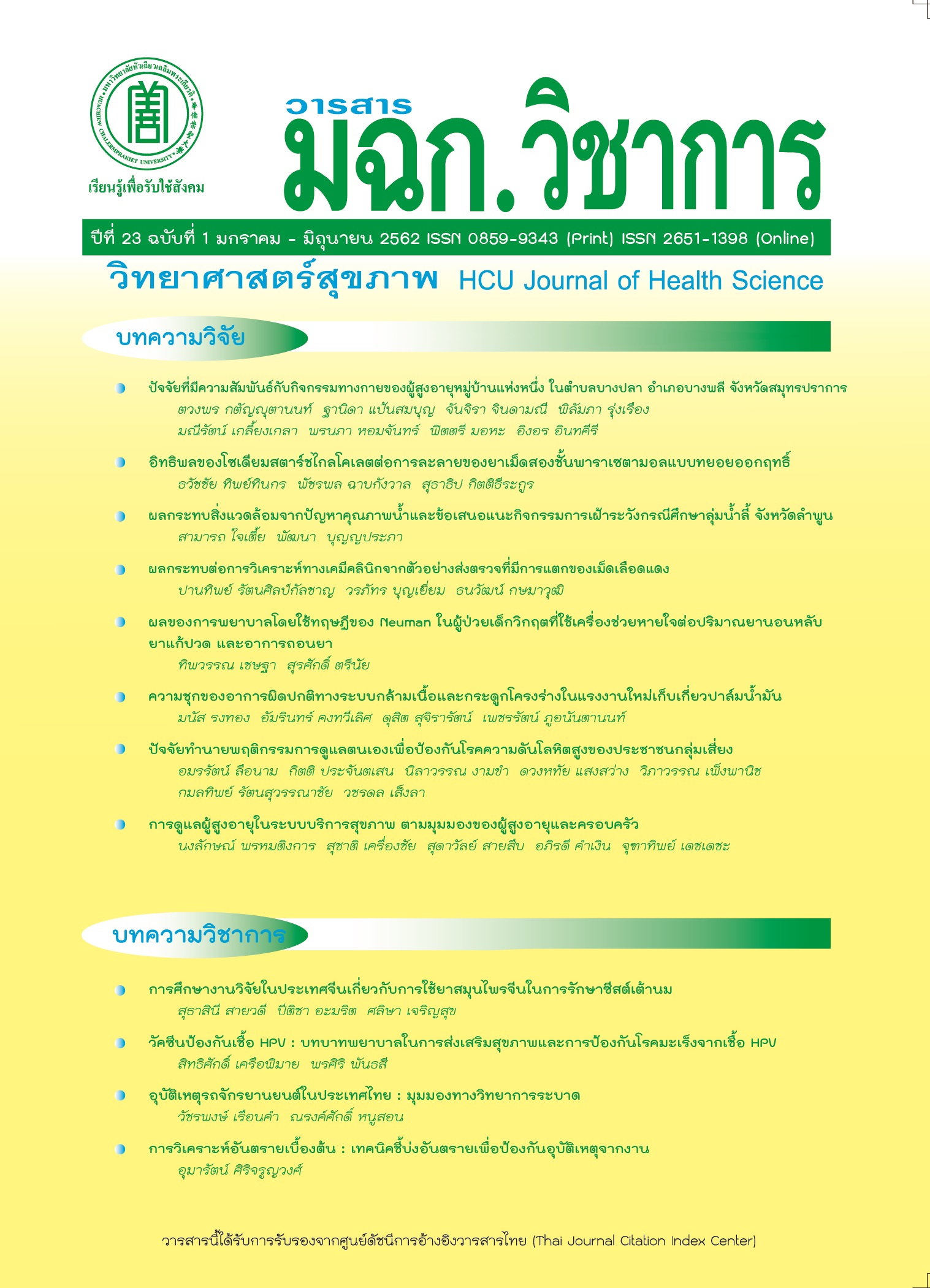Effect of Sodium Starch Glycolate on Dissolution of Paracetamol Extended Release Bilayer Tablets
Keywords:
Bilayer tablets, matrix, extended release, paracetamol, hydroxypropyl methylcellulose K4M, sodium starch glycolateAbstract
The objective of this research was to study the effect of sodium starch glycolate on dissolution of paracetamol extended release bilayer tablets. The immediate and extended release layers were prepared by wet granulation method. Extended release layer was prepared by using hydroxypropyl methylcellulose K4M (HPMC K4M) as matrix former at 1.25% of extended release layer weight. Sodium starch glycolate was used as disintegrant with concentrations 0, 1, 1.5, 2 and 2.5% of extended release layer weight. In vitro released studies were performed according to dissolution USP 40 and compared with dissolution specification. The results showed that the released rate increased with increased of sodium starch glycolate. The dissolution profile of the drug with 1.5% sodium starch glycolate was similar to that of the innovator. Both were conformed to the acceptance criteria level L1 of USP 40. Dissolution test results were further analysis by comparing with the innovator. The values of difference factor ( ) and similarity factor ( ) were 4 and 68, respectively. Drug released kinetics was followed Fickian diffusion. The mechanism of drug released through the matrix was found to be diffusion swollen and erosion controls. Extended release layer with HPMC K4M 1.25% as matrix former and sodium starch glycolate 1.5% as disintegrant would be benefit for this study. Therefore, the extended released bilayer tablets could be a potential dosage form for delivering paracetamol
Downloads
References
2. Randa H, Laurance LB, Goodman and Gilman’s manual of pharmacology and therapeutics. 2nd ed. China: McGraw-Hill Companies; 2014.
3. Corbett AH, Danna WJ, Fuller MA, Gallagher JC, Golembiewski JA, Gonzales JP, et al. Drug information handbook with international trade name index. 26th ed. NW, Washington: American Pharmacists Association; 2017.
4. Gopinath C, Bindu VH, Nischala M. An overview on bilayered tablet technology. J Glob Trends Pharm Sci. 2013;4(2):1077-85.
5. Banu H, Sahariar MR, Sayeed MSB, Dewan I, Islam A. Formulation development of bi-layer acetaminophen tablets for extended drug release. J Chem Pharm Res. 2011;3(6):348-60.
6. Abdel-Rahman SI, Mahrous GM, El-Badry M. Preparation and comparative evaluation of sustained release metoclopramide hydrochloride matrix tablets. Saudi Pharm J. 2009;7(4):283-8.
7. Rowe RC, Sheskey PJ, Cook WG, Fenton ME. Handbook of pharmaceutical excipients. 7th ed. Spain: Pharmaceutical Press and American Pharmacist Association; 2012.
8. The United States Pharmacopeia, 40th rev., and The National Formulary 35th ed. (USP 40-NF 35) Rockville, MD: The United States Pharmacopeial Convention; 2016.
9. Dash S, Murthy PN, Nath L, Chowdhury P. Kinetic modeling on drug release from controlled drug delivery systems. Acta Pol Pharm. 2010;67(3):217-23.
10. Peppas NA. Analysis of Fickian and non-Fickian drug release from polymers. Pharm Acta Helv. 1985;60(4):110-1.
11. British Pharmacopoeia Commission Office. British Pharmacopoeia 2017. London: Her Majesty’s Stationary Office; 2016.
Downloads
Published
How to Cite
Issue
Section
License
บทความที่ได้รับการตีพิมพ์เป็นลิขสิทธิ์ของวารสารวิทยาศาสตร์สุขภาพและสุขภาวะ
ข้อความที่ปรากฏในบทความแต่ละเรื่องในวารสารวิชาการเล่มนี้เป็นความคิดเห็นส่วนตัวของผู้เขียนแต่ละท่านไม่เกี่ยวข้องกับมหาวิทยาลัยหัวเฉียวเฉลิมพระเกียรติ และคณาจารย์ท่านอื่นๆในมหาวิทยาลัยฯ แต่อย่างใด ความรับผิดชอบองค์ประกอบทั้งหมดของบทความแต่ละเรื่องเป็นของผู้เขียนแต่ละท่าน หากมีความผิดพลาดใดๆ ผู้เขียนแต่ละท่านจะรับผิดชอบบทความของตนเองแต่ผู้เดียว




